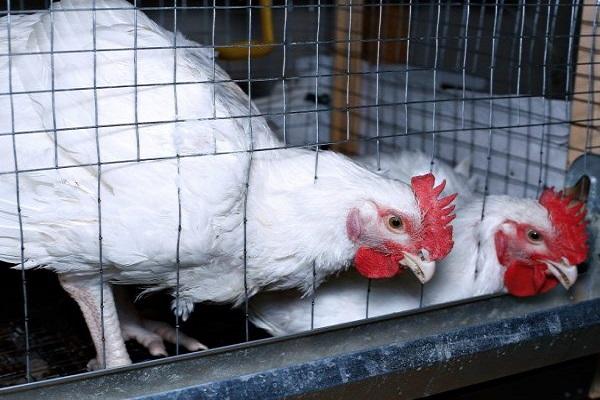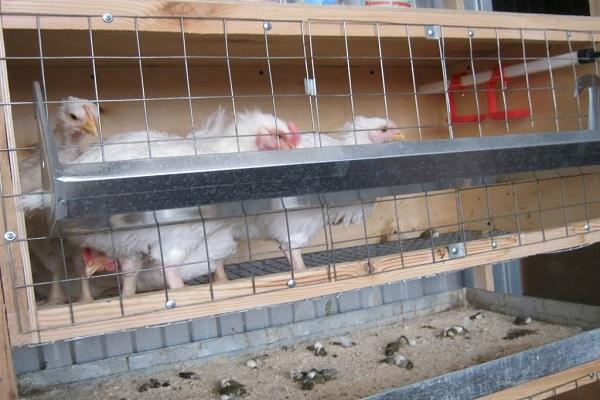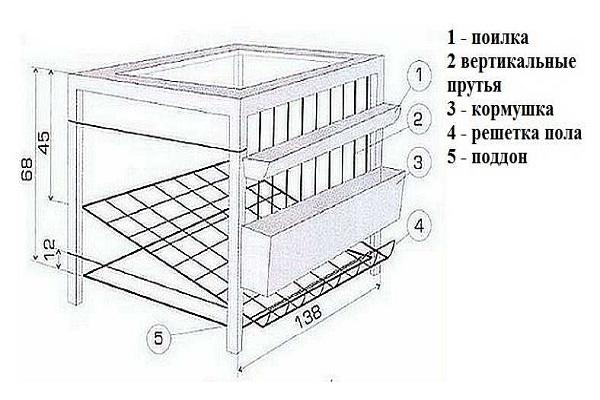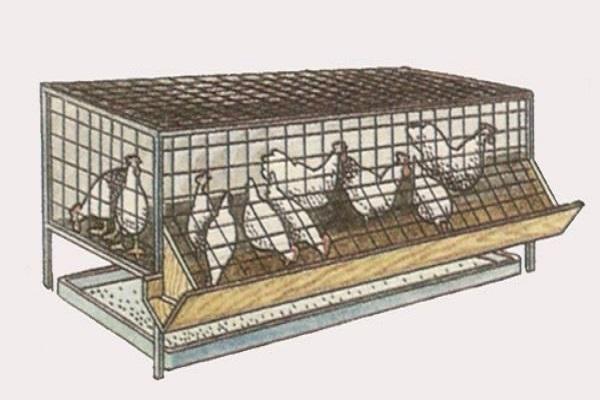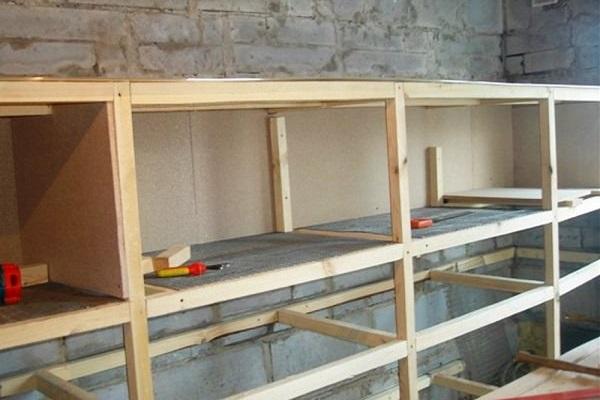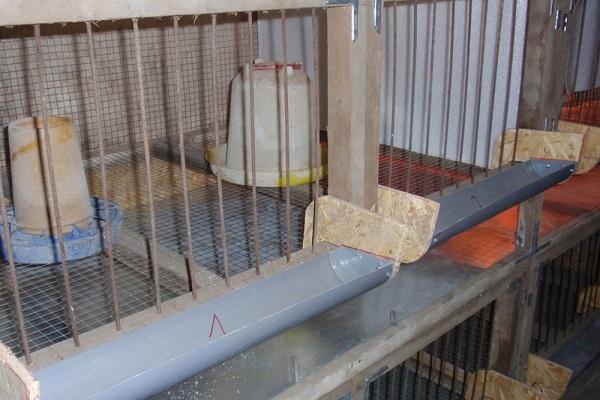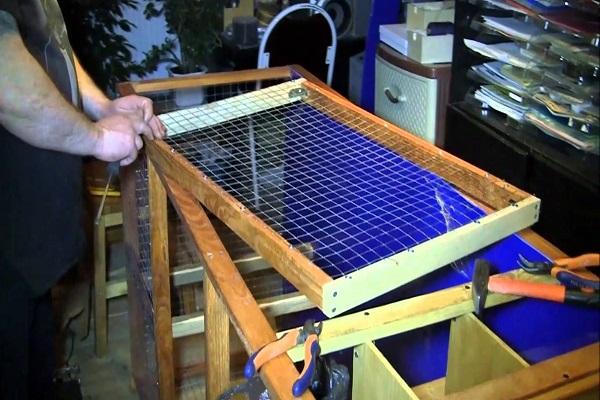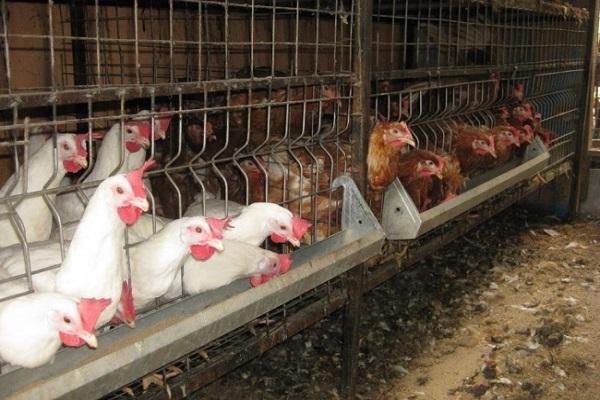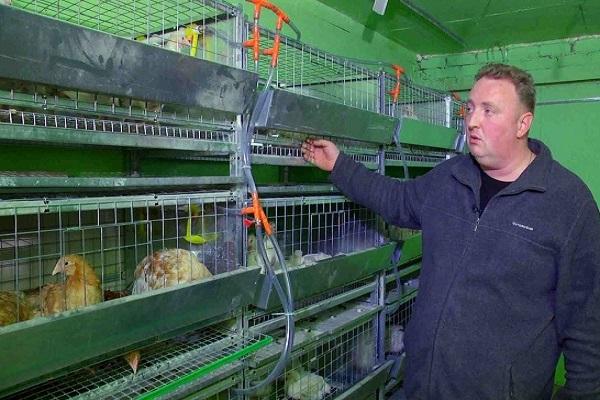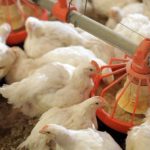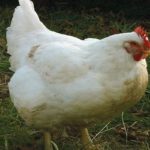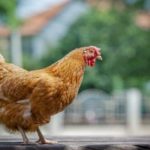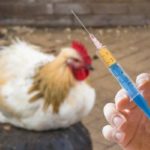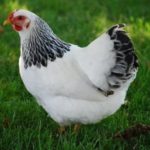When keeping broilers in cages, there are many features to take into account. To raise healthy birds, it is worth maintaining optimal temperature and humidity parameters. Lighting is of no small importance. This method of keeping birds has certain pros and cons. You should definitely familiarize yourself with them before arranging a room for keeping birds.
Features, pros and cons of broiler cage keeping
Keeping birds this way is more profitable compared to outdoor breeding. This is due to the shorter duration of growth. Chickens do not require much feed.
The main advantages of the technique include the following:
- Space saving. This helps reduce electricity costs, because chickens need additional lighting, heating and ventilation.
- Reducing feed consumption. This is due to the fact that birds do not scatter or trample food. Reducing physical activity helps you gain weight faster. This is due to the fact that energy is spent on growth, and not on motor activity.
- Minimum contact with other birds. With this method, only birds housed in adjacent cages can make contact. Thanks to this, it is possible to extinguish foci of infection in a timely manner.
- Easy to clean. This helps reduce the likelihood of the spread of infectious pathologies. Chickens do not eat their own droppings and do not inhale the smell of ammonia.
- Optimizing bird care. This category includes not only feeding the birds, but also performing regular veterinary checks.
For large productions this method is considered preferable. The key benefit is the rapid increase in body weight. This allows you to reduce fattening by 1 week and significantly increase profits.
The disadvantages of the technique include the following:
- significant costs for cages and necessary equipment;
- the need to maintain a special climate in the room with chickens - it is important to ensure the correct temperature parameters, adequate ventilation and lighting;
- the need to purchase specialized feed for proper nutrition of chickens;
- the risk of problems with paws with impressive body weight;
- the need for constant cleaning of trays;
- deterioration of taste.
When the cages are freed from chickens, disinfection must be performed. This helps avoid the risk of infection in the next batch of birds.
Basic requirements for broiler cages
The cage should be comfortable to use. To save space, it is worth making a special battery for birds. The structure is multi-tiered.
Dimensions
Chickens are not kept alone. They must be placed 4-7 individuals in each compartment. Can be contained on 1 sq. meter up to 10 chicks.
Quite a lot of birds are bred on farms. In such a situation, 10-25 individuals are raised in each section. In this case, the cells are arranged in 3-4 tiers.
Accommodation
The cells are located in a dry and warm room. It is important to ensure that there is no dampness or drafts. Electric lamps, heating pads or other heat sources help maintain the desired temperature in winter.
In summer, structures can be taken outside and placed under a canopy. In cool weather, it is recommended to return the cages indoors again. For convenient movement of the structure, it is equipped with wheels.
Feeding
It is recommended to feed chickens quite often. This is especially important in the first days of life. At the age of 1-5 days, the chick should receive 15 grams of dry food. As you grow older, the volume should be increased. At 50-60 days, a broiler should be given 100-120 grams of dry food.
It is recommended to feed chickens 4-5 times a day. When the chicks grow up, they switch to twice feeding. This is done at the age of 1 month.
Heating, lighting and humidity
When breeding broiler chickens in the first 20 days, it is recommended to turn on the lighting above the cages around the clock.When the birds grow up a little, first turn off the lights for half an hour, then for 1 hour. Thus, the duration of daylight hours is reduced to 16 hours.
As the chickens grow, it is worth changing the light intensity. For 1 square meter it is worth using the following indicators:
- 4 Watts – for chickens up to 10 days;
- 2 Watts – for 20 days of age;
- 1 Watt – for chicks over 20 days old.
When keeping chicks in battery cages, they are placed on the upper tiers because it is warmer there. The cages should be heated with electric lamps, which are installed on top. It is also important to monitor humidity. It should be in the range of 50-70%.
Cell litter
To raise broilers, bedding is required. Opinions vary regarding the materials used. However, experts advise using ordinary small sawdust.
Making your own cells
Making a cage at home is not difficult. To do this, you should purchase materials and strictly follow the instructions.
Materials
It is worth choosing consumables taking into account the preferences and financial capabilities of the poultry farmer. To make the structure more stable and wear-resistant, materials must be of high quality. It is best to make a supporting structure from wood. Such bars are characterized by high strength and durability. In addition, they are harmless from an environmental point of view.
The side walls are made of galvanized mesh. When choosing it, you should focus on high corrosion resistance. This parameter is very important due to constant contact with bird droppings. Of no small importance is the strength of the connection of the cells and the parameters of their geometry. If you choose the right mesh, you will be able to avoid damaging the chickens' paws.
To assemble the structure, you will need metal rods. They provide hidden fastening. To make the cage you will need fewer iron fasteners. This helps reduce the chance of injury to birds.
Stages
To make a cage, it is recommended to perform the following steps:
- Make a frame. Metal sheets are used for this.
- Make legs of the required height.
- Fasten all the fragments with metal slats.
- Make side walls from a mesh with large holes. It is important that the chickens can easily reach the feeder and drinker through the cells.
- Make a tray for manure with high sides. Place a plywood sheet on top.
- Make feeders and drinkers. Metal sheets are used for this. You can buy ready-made devices in the store.
Rules of care
When raising chickens in cages, it is important to ensure normal conditions. To do this, you should buy humidity and temperature sensors and carefully monitor their parameters.
The better the conditions, the lower the risk of disease and the faster weight gain. When raising chickens, you should consider the following rules:
- Maintain humidity parameters at 60-70%. When these parameters decrease, birds lose weight, feel thirsty, and take on a disheveled appearance. High humidity makes chickens lethargic and have heavy breathing.
- It is important to ensure good ventilation. It is required to supply fresh air and reduce temperatures in summer.
- Use combined lighting. This will help prevent rickets and vitamin deficiency. Also, a sufficient amount of light accelerates the growth of birds.
- Maintain the correct temperature. The older the birds, the more heat they produce.For adults, a temperature of 18-20 degrees is suitable.
- Remove litter in a timely manner. The smell of ammonia harms birds and causes illness. For small chicks, cleaning is carried out every 5-7 days. In adult birds, this should be done once every 2-3 days.
Growing stages
Broilers are hybrid meat breeds. They are characterized by rapid growth and rapid weight gain. When raising birds, it is necessary to quickly achieve maximum weight gain.
Broilers are raised for a maximum of 50-70 days. Subsequently, growth decreases and feed costs increase. Chicks should be purchased when they are 10 days old. Until this point, the highest mortality rate is observed. It takes 50-70 days to fatten birds. During this period they reach 2.3-2.5 kilograms. After this, the chickens are slaughtered.
It is worth considering that part of the livestock is selected for earlier slaughter at 35 days. For this purpose, the largest individuals are used. This frees up space and eliminates competition for food..
Raising broilers in cages is a rather labor-intensive process that has many advantages. To get a good result, it is recommended to properly organize bird care.

